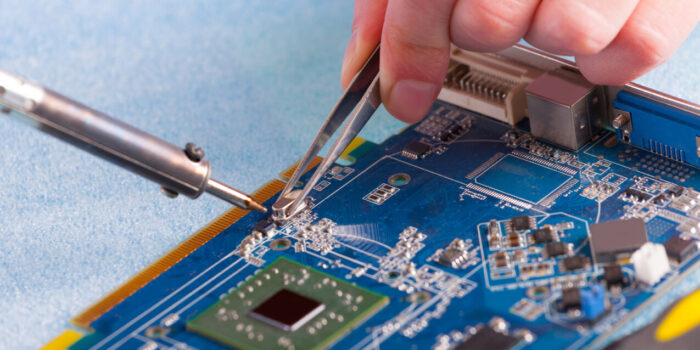What is soldering?

Soldering one of the most common methods of permanently joining metal parts using a metal bond called solder. Done correctly, it gives a solid and aesthetically pleasing connection. It is quite easy to do yourself using soldering irons - a small and simple device. Sometimes experienced people use a torch. Unlike welding, it does not damage the structure of the materials to be joined, although a small thickening at the solder point is visible. The temperature is adjusted so that there is no surface damage or over-melting and the bond is ductile.
Before soldering, it is important to clean the material thoroughly of the oxide layer so that a metallic bond is formed. A soldering flux is used for this purpose, which is applied with or before the solder. The most important thing is to choose the right temperature, without this it is impossible to get the right effect.
Soldering process flow:
- cleaning the surfaces to be joined;
- heating the components to a temperature 30-50 °C above the melting point of the solder;
- applying solder and flux to the edges to be joined;
- wait for diffusion and mutual adhesion;
- cool the binder until it coagulates.
Depending on the temperature, soldering is distinguished:
- hard (above 450 °C);
- high-temperature (above 900 °C);
- soft (below 450 °C).

These methods differ mainly in temperature, making it important to choose the right solder. The brazing temperature is strongly dependent on the melting point of the binder. Soft soldering is used for delicate metals and brazing for robust metals. The thermal sensitivity of the materials is an important factor.
Where does soft soldering work?
Most often in the household. A simple and quick process at a relatively low temperature should not be a problem. You can make it yourself using the simplest soldering iron.
What metals does soft solder consist of?
The most common metal used for soldering in an alloy, is tin and other metals with a similar melting point such as antimony, cadmium or bismuth. In addition, there may be traces of mercury and lead or other poisonous elements. Fortunately, manufacturers are largely stopping adding these, taking care of health and the environment. Soft solders come in various shapes, e.g. sticks, plates, wires or powder. Which metals do they apply to? Copper, steel, zinc and brass.
In what work will it be used?
- connecting electrical wires and electronic circuits;
- sealing of gutters and roof;
- flashing;
- Pipeline repair.
Brazing
It usually requires professional tools and experience in the industry. The work is carried out at very high temperatures, so all precautions must be taken.

There are metals that need up to five times the temperature to do the job properly. In such situations, we are talking about industrial soldering, where an ordinary soldering iron will be useless. Instead, a soldering lamp, an oxy-acetylene torch or a forge fire are used.
Another method is induction brazing with an electric current. The most common brazes contain silver mixtures, so that most metals (except aluminium and magnesium) can be joined. Copper-phosphorus solders are for copper, bronze, or brass. Nickel solder is used for stainless steel. Copper solders are for nickel, steel, brass-tin alloys. Brazing is used in many industries, e.g. automotive, refrigeration and the joining of copper pipes.


